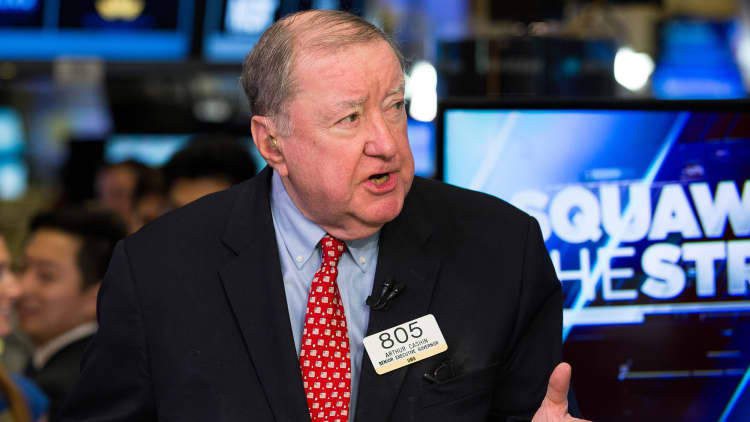Consider these the dog days of the dog days. Not only is August traditionally a crappy markets month, but it's also when it gets harder to find truly market-moving news.
The stock market just seems to have a mind of its own. So long as hopes remain that Congress will figure out a way to reform the tax code and cut regulations, stocks just keep marching higher.
With all that in mind, here are a few things to keep in mind for the week ahead.
August is the worst
Well, it's actually just the worst month for the market over the past 20 years, but that's still pretty bad.
Looking over the past 100 years, August is around middle of the pack. Over the past 50 years it would rank 10th and it's dead last in the two decades, with the Dow industrials down an average 1.39 percent during that time, according to Bespoke Investment Group. [The best month over the last 20 years? April.]
An investor who put $100 in the market 50 years ago would have just $98 in hand today, Bespoke computes.
So what to make of the information? It depends on your perspective.
"For a long-term investor, the fact that August and September have historically been bearish is no reason to liquidate and wait it out, because eventually we'll move past these two months and then the final three months of the year turn into extremely bullish months," Bespoke's Paul Hickey said in a note. "For a shorter-term trader, though, seasonality trends like this are a helpful input."
The profit picture is ... really pretty
With second-quarter earnings season winding down, it's worth a look in the rear-view mirror.
With 84 percent of S&P 500 companies reporting, 72 percent have beaten Wall Street estimates on earnings and 70 have topped on sales. That's better than the norm and good enough to show a 10.1 percent profit gain for the quarter. As recently as June 30, Wall Street had been expecting earnings growth of just 6.4 percent, according to FactSet.
Here's something to know, however, and worth keeping in mind when the next earnings season comes around in October: Companies that beat received virtually no short-term reward for the first time in 17 years, according to Bank of America Merrill Lynch. Those missing were penalized substantially.
However, investors were looking to the future. BofAML called management outlooks "more optimistic than expected," with particularly strong guidance for health care and industrials, helping explain some of the market rally.
Inflation in view
In the 1970s, when bell-bottom jeans and the Bee Gees and mood rings were cool, inflation was not. Now, economists would give their pet rocks for a little.
Inflation is currently around 1.4 percent, a level that economists consider perilously low as it could be indicative of a looming economic slowdown. Some worry that the Fed, which sets interest rates and watches the indicator closely, is hiking unnecessarily. Worker pay, for instance, is still moving higher at a pretty gradual pace, increasing just 2.5 percent over the past year, according to Friday's jobs report.
We'll get a closer look later in the week at where inflation stands, when the government releases its producer price index data on Thursday and the consumer price index numbers a day later.
The Fed is looking for those numbers to get closer to 2 percent; current forecasts are for 1.8 percent on the CPI.
The last word, the 22K version
Much was made last week of the Dow breaking through the 22,000 barrier for the first time. While it was cause for celebration in some quarters, like the White House, it's always wise to exercise some caution when it comes to getting excited over round numbers.
Words of wisdom this week, then, from Brad McMillan, chief investment officer at Commonwealth Financial Network:
"Looking at the shorter term, hitting repeated milestones gets investors excited, makes them fear missing out on gains more than potential losses, and can drive the market higher. With fundamentals solid and earnings rising, there is even a good case for that. Over the next couple of quarters, things look good.
"Over the longer term, though, historical comparisons — based simply on how bursts of gains like this have played out in the past — call for caution. There are other reasons for caution as well, as I have written many times before, but this is a new one to add to the list.
"So, celebrate the good news, by all means. But keep in mind that parties don't last forever, and hangovers are more painful the more fun you had the night before."
WATCH: Cashin: Divergence between Dow and Dow Transports 'worrisome' for traders



